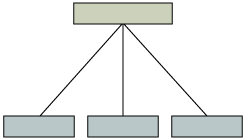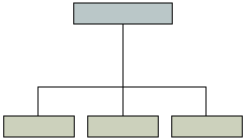ARCHIVED 2.4.4. Hierarchical Relationships
Archived Content
Information identified as archived is provided for reference, research or recordkeeping purposes. It is not subject to the Government of Canada Web Standards and has not been altered or updated since it was archived. Please contact us to request a format other than those available.
Consult the Pavel in ...
Español Português Italiano Nederlands العربية
There are two types of hierarchical relationships: generic-specific and part-whole. Hierarchical relationships are those most frequently used to structure knowledge.
Generic-Specific Hierarchies
In generic-specific relationships, the characteristics of superordinate concepts (broader concepts) are inherited by subordinate concepts (narrower concepts).
The following tree diagram is used to represent generic concept relations (taken from ISO/FDIS 704, 2000: VII):

Partitive Hierarchies (Part-Whole)
In a partitive relationship, there is no inheritance of characteristics between the whole and its parts.
The following rake or bracket diagram is used to represent partitive concept relations (taken from ISO/FDIS 704, 2000: VII):

- Date modified: